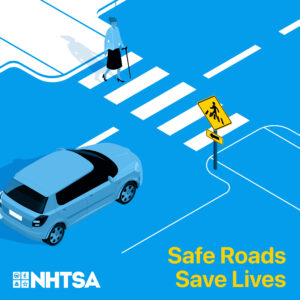
Keep Middlesex Moving, Inc.,
Announces New Executive Director
NEW BRUNSWICK, NJ., August 26, 2024— The Keep Middlesex Moving Board of Trustees is pleased to announce that Brian Tobin has been named as the new Executive Director of Keep Middlesex Moving Inc. (KMM).
“The Board of Trustees is excited to welcome Brian to our organization,” stated John Reissner, Chairman of Keep Middlesex Moving. “With his broad experience in both transportation and the non-profit sector, Brian’s appointment marks a significant step toward enhancing our initiatives and expanding our reach,” added Reissner. “His proven leadership and innovative approach will be invaluable as we strive to promote safer, more efficient transportation options for our community.”
With a background encompassing business development, public education initiatives, grant writing, and management, his strategic focus will be strengthening relationships with local, county, and regional stakeholders, fostering new business partnerships, and identifying opportunities to enhance safe and accessible transportation options for Middlesex County’s residents, businesses, and commuters.
Tobin aims to prioritize innovative solutions that address the evolving needs of the county’s transportation infrastructure. “Keep Middlesex Moving is an incredible Middlesex organization, and I am eager to collaborate with such a dedicated team and to contribute to the organization’s mission of enhancing transportation safety and efficiency,” Tobin stated. “We are on the brink of significant changes in how people move around. Embracing new technologies and sustainable practices will be crucial in creating a safer, more efficient transportation network that serves everyone in Middlesex County.”
KMM is the non-profit 501(c)(3) Transportation Management Association (TMA) for Middlesex County. For 36 years, KMM has worked with businesses, commuters, elected officials, community groups, and other partners to implement programs that reduce congestion, increase safety, and improve air quality. KMM is funded, in part, by the Federal Highway Administration via the North Jersey Transportation Planning Authority (NJTPA), the New Jersey Department of Transportation (NJDOT), NJ TRANSIT, the New Jersey Division of Highway Traffic Safety (NJDHTS), and other private funding sources.
“We are confident that under Brian’s leadership, KMM will continue to innovate and excel,” Reissner concluded. “His vision aligns perfectly with our mission, and we are eager to see the positive impact he will make on transportation in Middlesex County.”
Mr. Tobin is a lifelong New Jersey resident residing in Metuchen, NJ. He holds a master’s degree in history from Rutgers University and serves as a trustee for the Intelligent Transportation Society of New Jersey and the New Jersey Society of Asphalt Technologists. Before coming to KMM, Brian was a project manager at Rutgers Center for Advanced Infrastructure and Transportation (CAIT) and served as executive director for the New Jersey Asphalt Pavement Association (NJAPA) and the Associated General Contractors of New Jersey (AGC of NJ).




 Check the weather. Leading up to and a few hours before your hike, check the weather. The weather, especially this time of year, isn’t always predictable. It’s better to be aware and prepared instead of being surprised while on your hike.
Check the weather. Leading up to and a few hours before your hike, check the weather. The weather, especially this time of year, isn’t always predictable. It’s better to be aware and prepared instead of being surprised while on your hike. The World Day of Remembrance for Road Traffic Victims (WDR) is commemorated on the third Sunday of November each year.
The World Day of Remembrance for Road Traffic Victims (WDR) is commemorated on the third Sunday of November each year. More than 6 in 10 people walk for transportation, exercise, relaxation, or other activities. The benefits of walking extend beyond personal and physical, to environmental benefits that can lead to healthier, quieter, cleaner, and safer streets. Walking can also improve local economies and enhance social and community engagement, leading to more vibrant, resilient, and livable spaces.
More than 6 in 10 people walk for transportation, exercise, relaxation, or other activities. The benefits of walking extend beyond personal and physical, to environmental benefits that can lead to healthier, quieter, cleaner, and safer streets. Walking can also improve local economies and enhance social and community engagement, leading to more vibrant, resilient, and livable spaces. Remote work, hybrid schedules, and flexible office hours are becoming standard practices in the workplace. Each can be unique to the office environment or industry. To help ensure success across your organization, let’s start with the basics:
Remote work, hybrid schedules, and flexible office hours are becoming standard practices in the workplace. Each can be unique to the office environment or industry. To help ensure success across your organization, let’s start with the basics: Week 4 Relaxation Week
Week 4 Relaxation Week  Week 3 Family Outing Week
Week 3 Family Outing Week